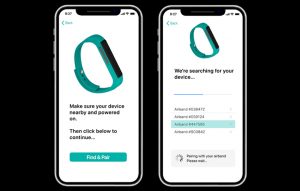Introduction
IoT has reached a point where the name itself is enough to explain what it actually is and how it works. We know that in the current market scenario, there is a huge tide of adoption of IoT technology in various business industries to deal with the challenges faced by business owners. At the core of this technology lies a suite of applications that assist the user to gain insights regarding the entire eco-system. This suite is known as an IoT platform. This suite allows the connected device to transmit and collect data from one another. In simpler words, an IoT platform is the data junction of any device connected in an IoT environment.
We discussed in the previous post that how an enterprise-ready IoT platform can help you in elevating your business to a new level. However, this post will be all about one such core functionality of an IoT platform – device management.
Principles of IoT platform device management
Implementation of IoT in a business brings a unique set of challenges for business heads and supervisors. In order to overcome the challenges, every enterprise-ready IoT platform must address the following principles;
Context awareness
An IoT environment is dynamic and ever-changing, and device reliability is the highest priority. Device management operations must take into account the following factors to ensure that downtime doesn’t affect critical business operations or create dangerous conditions:
1. In-use conditions
2. Device geolocation
3. Network and power states
Openness and compatibility
In an IoT environment, the device ecosystem is extraordinarily and extensively diverse. Management tools must be customized to accommodate data from a variety of platforms, protocols, and devices. Operators must be able to support different types of devices- from the most constrained embedded single-process chips to powerful and fully functional computers.
Scale and automation
In order to make the working smooth in an IoT environment, tools must be simple and efficient enough to automate the tasks. The tools must be capable enough to manage the connected device and their operations. Often, operators expect to handle device operations remotely and to only be alerted when issues arise that require their direct attention.
One service many roles
One of the crucial roles in an IoT ecosystem is the support for unique workflows and processes of IoT operations. The operations staff must be able to work in sync with the IT department. They must also find sustainable ways to surface real-time device operations information to supervisors and for other
business managerial roles.
Why do you need device management in an IoT environment?
As the technology evolves, an IoT ecosystem keeps on getting complex. The number of connected devices keeps on increasing in order to deliver more data that can increase and improve the proficiency of a business. The devices connected may range from small sensors, single-purpose microcontrollers to powerful gateways that connect the devices form the server. An IoT ecosystem is not a “fire and forget” scenario. Bug fixes, software updates, and device replacements are part of the system. So as to minimize the downtime while maintaining both hardware and software, organizations must have certain paradigms.
An IoT platform’s device management offers certain facilities that can take care of devices and software to reduce the downtime and keep up the productivity.
Some of such capabilities are;
- Provisioning and authentication
- Configuration and control
- Monitoring and diagnostics
- Software updates and maintenance
To get a better idea about these advantages, let’s have a look at them one-by-one;
Provisioning and authentication
What is provisioning? In simpler words, provisioning is the process of assigning a certificate to an IoT device. This also contains complete information about the device/group of devices that are connected at different locations in an IoT ecosystem. This, as a result, helps manage the desired configuration of every device making it easy to update the device as per the latest advancements in the market.
However, authentication improves the security of the device and the device-generated data in the system. Device authentication by an IoT platform securely establishes the identity of the device, ensuring that the device is trustworthy. In a data-sensitive environment, it is important to know whether the connected device is genuine and is working on behalf of a trusted user.
Provisioning and authentication offered by an IoT platform’s device management ensure the safety of every device which in turn improves the overall security of the IoT ecosystem and business.
Configuration and control
As it is said, precaution is better than cure, any device with a factory configuration can be hacked or the data from the device can be altered. So, to avoid such a loss, it is recommended to customize the configuration according to the user. Now, device management allows the user to integrate the reconfigured devices with the platform and work smoothly.
Monitoring and diagnostics
The main reason for implementing an IoT platform in a business is that one can track and monitor devices and assets remotely. Remote monitoring and diagnostics capability helps a company to minimize downtime and avoid unexpected operational problems. One can monitor different aspects of monitoring, networking, storage and I/O statistics at a process level and compare with nominal/ideal values to identify possible security breaches or any error.
Software updates and maintenance
Device management allows over-the-air (OTA) updates to the network of connected devices. This ensures the continuous device improvement while providing in-depth device protection. The OTA updates allow an IoT platform to track/monitor the device, maintain the device software, manage firmware, fix bugs, add features, and customize the device even if it’s shipped and installed in a network.
Features of IoT platform device management
Device deployment and lifecycle management
In current trends, connected devices have become a de facto solution for most of the challenges that are faced by the industries today. However, the rapid growth in the number of connected devices brings challenges like the enormous amount of data collection, transfer, storage, computation, and consumption. This may result in malfunctioning of the connected device in an IoT ecosystem. Thanks to the device deployment and lifecycle management capability offered by an IoT platform, the data, irrespective of the amount, can be smoothly routed to the relevant device. Deployment and lifecycle management of the connected device by an IoT platform allows the hassle-free integration of the device to the relevant application. This results in a better integrity of devices, data and most importantly the IoT ecosystem.
Security
Security of the ecosystem is a prime concern for any industry today. Who can forget the “Ransomware” cyberattack on various systems throughout the globe? Such events of malicious attacks show how vulnerable an IoT ecosystem and the data generated in that particular environment can be. IoT device management allows the user to maintain security aspects of the device by constant monitoring and regular updates. It adds an additional layer of security by salting and hashing the authentication token which was generated while registering the device or generating API keys. This means the credentials of an organization cannot be recovered by any malicious user.
Connectivity
IoT device management allows businesses to control the status of the device in a hassle-free manner. It enables the platform to connect certified third-party devices to the ecosystem. To achieve a smooth functioning of the devices, the IoT platform supports connectivity options like; BLE, ZigBee, Wi-Fi, and LORA.
Device connectors
Device management allows an enterprise to connect I/O devices to the IoT ecosystem without making major changes in the existing infrastructure. This provides security, simplicity, and scalability to the IoT ecosystem of an organization.
Firmware management
To cope with changing business trends and requirements, flexible updates for hardware and firmware are necessary. The device management functionality of an IoT platform allows the device in the environment to compare the currently active version of the firmware. If the latest update is newer than the current firmware, the IoT platform can upgrade the device with just one click.
Benefits of IoT device management
Know your device
IoT device management assists stakeholders to track, monitor, manage, secure and sustain the connected devices. The dashboard associated with the IoT platform can be remotely accessed to allow the devices to be provisioned, managed, and decommissioned in real-time.
Reduced maintenance and operational costs
Predictive maintenance is what business personnel are looking for nowadays. It can be an effective solution for any breakdown, periodic maintenance, and locating the connected device within the ecosystem. With device management, the time consumed in concluding the above-mentioned task is reduced substantially. The reduced time consumption leads to a reduction of maintenance and operation costs.
IT and OT convergence
A parallel coordination of operational technology (OT) and information technology (IT) is essential for any business to have an additional edge over its competitors. IoT device management provides a seamless information flow that allows the IT and operation department to work synchronously on projects. This, in turn, yields better services that can be offered to clients and enhances revenue models for organizations.
Summary
If summarized, it won’t be wrong to say that it is the device management capability of an IoT platform that makes the managing, monitoring, and updating devices easy. Having seamless device management by your side enhances the possibilities of a future-proof plot for business success. Looking at the benefits provided by device management, a business can expect results in terms of better productivity, reduced downtime, enhanced connectivity, and most importantly, minimized operational and maintenance costs.









